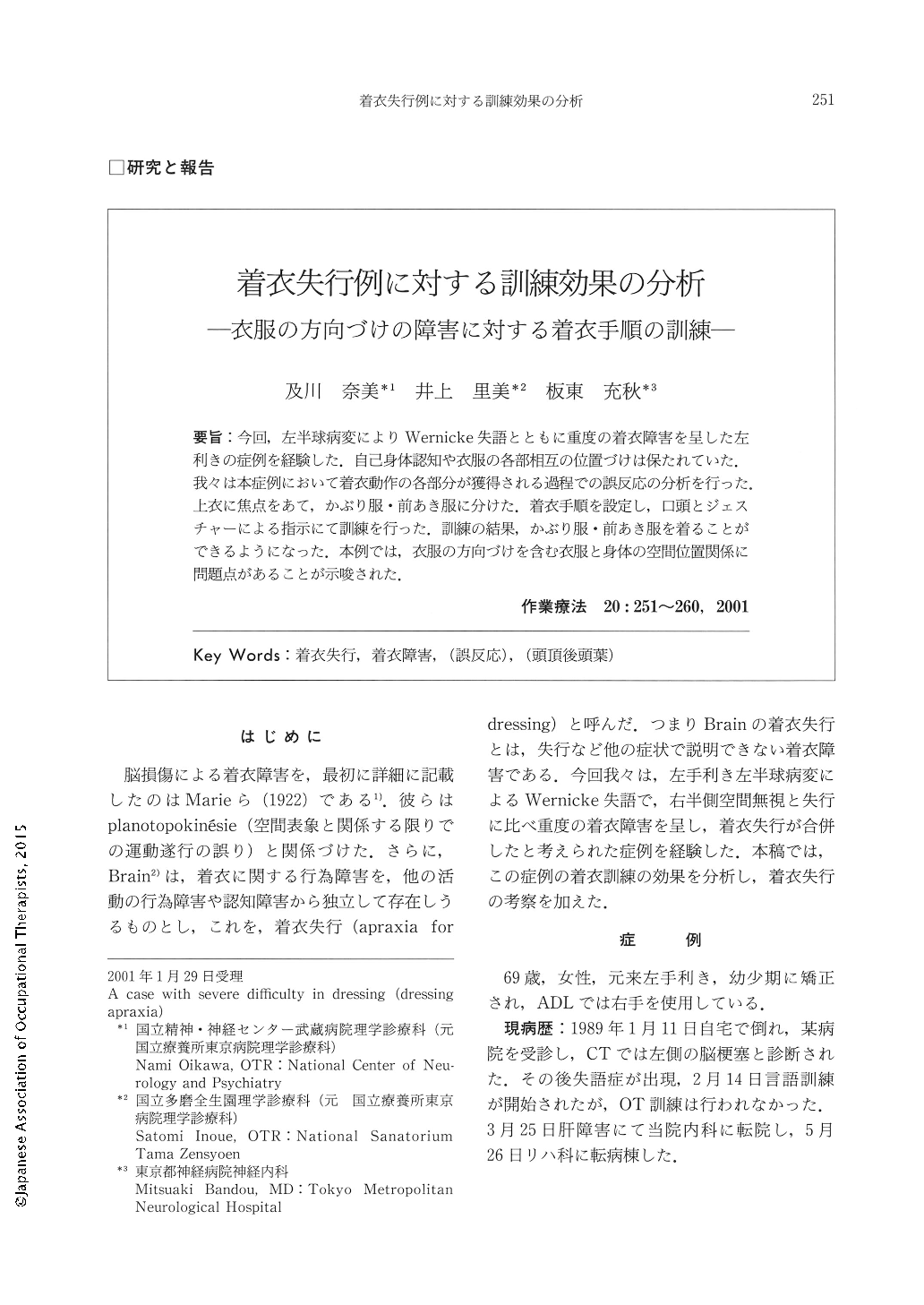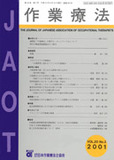Japanese
English
- 販売していません
- Abstract 文献概要
- 1ページ目 Look Inside
- 参考文献 Reference
- サイト内被引用 Cited by
要旨:今回,左半球病変によりWernicke失語とともに重度の着衣障害を呈した左利きの症例を経験した.自己身体認知や衣服の各部相互の位置づけは保たれていた.我々は本症例において着衣動作の各部分が獲得される過程での誤反応の分析を行った.上衣に焦点をあて,かぶり服・前あき服に分けた.着衣手順を設定し,口頭とジェスチャーによる指示にて訓練を行った.訓練の結果,かぶり服・前あき服を着ることができるようになった.本例では,衣服の方向づけを含む衣服と身体の空間位置関係に問題点があることが示唆された.
A 69-year-old left-handed woman experienced difficulty in putting on clothes after cerebral infarction. A neurological examination revealed slight right hemiparesis and right homonymous hemianopsia. Neuropsychologically, she manifested Wernicke's aphasia, right hemispatial neglect, and apraxia, however, neither somatagnosia nor autotopagnosia. She was intellectually normal. A brain CT revealed a lesion in her left posterior temporal lobe, inferior parietal lobule, and parieto-occipital junction reaching into deep white matter. The MRI showed an additional lesion in her precentral gyrus.
On analyzing her dressing performance, she could point out different parts of chlothing correctly. However, when the clothing was laid in front of her, she took it and examined it by hand, but hesitated to put it on. Even if she began to dress, she put it on back to front, and she could not complete the required performance. The most characteristic feature of her dressing apraxia is as follows: although she could recognize each part of clothing and each part of her own body correctly, she could not dress properly.
To improve her dressing apraxia, the procedure of dressing into a T-shirt was divided into four elementary movements and then a jacket into five movements. For each movement, both verbal and gestural instructions were given. After 6 months trial and error, she came to be able to dress into both a T-shirt and jacket.
It is suggested that the dressing apraxia observed in the present case may represent an inability to relate each part of clothing with the corresponding part of her body correctly.

Copyright © 2001, Japanese Association of Occupational Therapists. All rights reserved.


